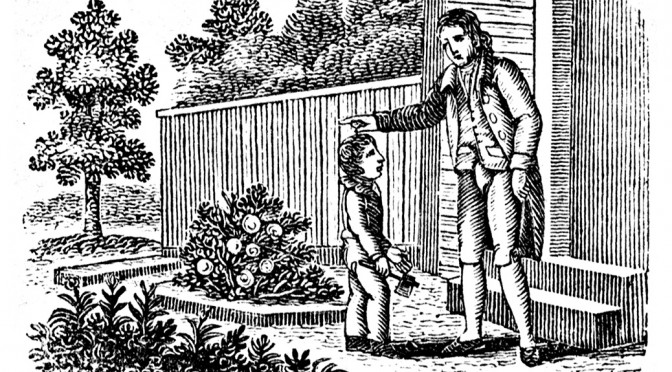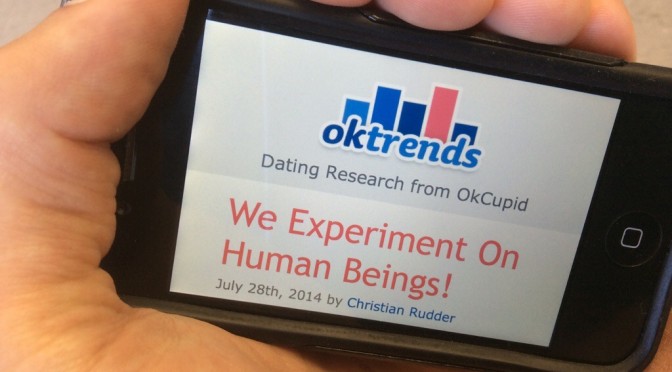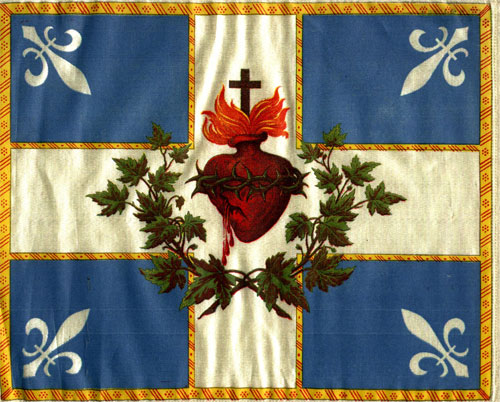This morning I got a notification that King Charles has an enlarged prostate. Shortly after that my phone tells me Princess Kate is recovering from some form of abdominal surgery. I can’t help but think that maybe I’m getting too many notifications.
Category: culture
The Amazing World of DAK Catalogs
Cabel Sasser spent 10 years preparing this blog post. It’s a deep dive into the Golden Age of direct to consumer catalogues.
For a decade, I’ve been snapping up copies of a certain gadget catalog, one by one, when they’re up for auction. Collecting and waiting.
The catalogs were disposable, and that means not many people kept them. But, to me, they tell a critically important story of the golden age of electronics, gadgets, copywriting, and sales.
They deserve to be preserved.
And I’m the guy to do it.
The closest thing I had growing up, was the Consumers Distributing magazines.
Did Coca-Cola Invent Santa

My daughter, at age 4, is already questioning the legitimacy of the Santa Claus story. I haven’t been much help in keeping her in the dark because I try and follow a strict radical honesty policy with my kids. She wants to believe so badly though, so despite my inclination, I try not to destroy the façade. When she could tell I was doubting, she explained that she’s a believer because she actually met Santa when she was little. I guess, in a way, she has me there.
Where did Santa even come from? It’s widely known he’s based on St. Nicholas, a fourth century Christian bishop of Myra, hence his penchant for red outfits, but the Santa Claus we think of today was shaped largely in part by Coca-Cola and a 19th century poem1.
- The poem, of course is, “A Visit from St. Nicholas” commonly known as “Twas the Night Before Christmas”[↩]
Understanding The Milk Crate Challenge
Seems like he could be a little stronger on the “don’t try this at home, kids” part of the video… But maybe the video speaks for itself. I don’t understand why people get caught up in these trends, but then again I’ve never felt the urge to eat a Tide Pod either.
(Via Cynical-C)

Despite LDS church officials distancing themselves from fringe conspiracy theories and congratulating incoming President elect Biden, we still witness the embarrassment of a Mormon proudly participating in yesterday’s debacle and broadcasting their association with the church publicly by flying the “title of liberty” pictured above and cosplaying as a warrior from the Book of Mormon.
From Wikipedia:
Moroni [a character from the Book of Mormon] is associated with the “title of liberty”, a standard that he raised to rally the Nephites to defend their liberties from a group of dissenters who wanted to establish their leader as a king. Moroni was so angry with Amalickiah’s dissention and wicked influence that he tore his coat and wrote upon it, “In memory of our God, our religion, and freedom, and our peace, our wives, and our children.” With those words, he rallied his people to defend their families and their freedom and drive out the armies of Amalickiah. Moroni put to death any dissenters who did not flee and would not support the cause of freedom, and his ” title of liberty” was raised over every Nephite tower.
I guess I’m more disgusted by the so called Saints participating in this madness than others because of my background in the church and the sensitivity church members have with regard to fighting against the United States government. See also Articles of Faith: “12 We believe in being subject to kings, presidents, rulers, and magistrates, in obeying, honoring, and sustaining the law.”
There are lunatics within any large enough group of people, but I even know some — heck, am related to them — that would not surprise me to hear they went to this level. (By his body size, I certainly don’t think this is someone that I know.)
As I mentioned previously, it shocks me the level of support Mormons give Trump.
Update: These tweets sum it up for me:
I have not practiced Mormonism in years, and I cannot describe the utter rage and betrayal I feel that the religious values that molded me into the person I am today also told that Captain Moroni guy to larp his way into domestic terrorism yesterday.
— jennie (@jennieology) January 7, 2021
Captain Moroni cosplay is obviously not a very big deal in the grand scheme of things, but I will never forget this man. I will never forget that the same religion that molded me also molded hundreds of thousands of people into….this. And those are the people they want to keep.
— jennie (@jennieology) January 7, 2021
How to Be Polite

A lovely piece on politeness.
Most people don’t notice I’m polite, which is sort of the point. I don’t look polite. I am big and droopy and need a haircut. No soul would associate me with watercress sandwiches. Still, every year or so someone takes me aside and says, you actually are weirdly polite, aren’t you?

In a blog post published yesterday, OkCupid revealed it’s been lying to some of its users just to see how manipulating their experience could make the site better at matchmaking.
The public’s reaction to OK Cupid’s admission of the kind of A/B testing that Facebook caught hell for has been much more muted. It turns out, treating your users like guinea pigs is ok as long as people already like your website (nobody really likes Facebook — they’re just trapped by the network effect).
So what exactly did they do? From the blog post:
The ultimate question at OkCupid is, does this thing even work? By all our internal measures, the “match percentage” we calculate for users is very good at predicting relationships. It correlates with message success, conversation length, whether people actually exchange contact information, and so on. But in the back of our minds, there’s always been the possibility: maybe it works just because we tell people it does. Maybe people just like each other because they think they’re supposed to? Like how Jay-Z still sells albums?
To test this, we took pairs of bad matches (actual 30% match) and told them they were exceptionally good for each other (displaying a 90% match.)† Not surprisingly, the users sent more first messages when we said they were compatible. After all, that’s what the site teaches you to do.
† Once the experiment was concluded, the users were notified of the correct match percentage.
Once again this year, the ACFA Regionale de Lethbridge is hosting a Saint Jean Baptiste Day celebration. It’s going to be held this Friday, June 24, 2011 at Cite des prairies — Mayor Magrath & 6th (it’s the French school / community centre) from 3:00pm to 10:00pm.
Please come out to the free celebration and enjoy:
“Bbq, inflatable games, drinks, face paint, free shows including the multilingual world beat musical band from Edmonton : Le fuzz. There will be more…!”
St. Jean Baptiste Day, it turns out, started out over 2000 years ago in the pre-Christian Europe as a pagan solstice celebration originally held on the 21st of June. With the arrival of Christianity the holiday was moved a few days later and has been celebrated on the 24th ever since.
Here is some other interesting info I picked up on the web:
In the beginning, Saint-Joseph had been designated as the patron saint of New France (just like Saint-Patrick is to Ireland). The problem was that his Holy day is in March and the Quebec climate during that time of the year is not very favourable for celebrating. It is for this very practical reason that Saint-Jean-Baptiste Day became more popular, the end of June being a great time to have fun outside. Today, the holiday has lost its religious meaning but has kept its traditional name.
You know that whole, “Kiss me, I’m Irish” meme? I wonder if a t-shirt reading, “Kiss me, I’m French” would work and do you think it would be rude to expect a “French” kiss? It seems reasonable.
Lastly, if you are not in a place that celebrates St. Jean Baptiste, then you can at least appreciate some Quebecois culture with this recipe for poutine, a traditional French Canadian delicacy.
Poutine (Canadian fried potatoes with gravy and cheese curds)
Poutine (poo-TEEN, or puh-TSIN) is a popular fast food in the French-speaking Canadian province of Quebec. The name means “mess” in French, and that it is. Poutine’s popularity has spread throughout Canada since the dish first appeared in the 1950s. This recipe makes 2-3 servings.Ingredients:
1 1/2 pounds French fries, cooked and hot
2 cups Cheddar cheese curds, broken into chunks
2 cups hot, Beef gravyPlace the hot French fries in a large bowl or individual serving bowls. Sprinkle over the cheese curds, then pour over a liberal amount of the hot beef gravy. Serve with a fork.

Photo by Jeff Milner 2010
Pictured above is some poutine I had the last time I was in Quebec. Yum.
When I happened upon the CBC’s “Reuse and Permissions” page, I clicked the link because I was curious how the nation’s publicly funded broadcasting company would feel if I tried to reuse the content that I helped pay for.
From the FAQ:
Q. I am a university student and have come across a video clip on your website that I am hoping to use in a presentation. Is it possible for me to use it?
A. Unfortunately, we can’t give permission for this type of use without charging a sizeable licensing fee. However, you are welcome to create a link to the cbc.ca page in your presentation, so your fellow students may view the CBC content.
They can’t give permission without a sizable licensing fee?! It seems they’re not actually interested in licensing their content either or perhaps they’d have some information regarding just how “sizable” a fee they mean. For some students, using a “link” to the CBC’s website is not possible if the presentation is going to be done at a school where the Internet is not available. Now, having said that, using the web browser to view their content IS making a copy! That’s how the Internet works, everything is a copy! So they’re giving permission to make a copy while at the same time trying to imply a restriction on ones right to change the format in which the copy exists (ie. only playing the content from their website).
Now for an organisation so reliant on tax payers’ funding, the CBC’s policy is in itself ridiculous, but if we take it a step further and consider what the Canadian Copyright Act states about students copying work for educational purposes, we find some rather revealing details (though I’m not a lawyer, this seems pretty simple to me).
In the 2004 landmark ruling by the Supreme Court of Canada in CCH Canadian Ltd. v. Law Society of Upper Canada the concept of fair dealing in Canada was clarified, in part, when the Court made the following general observation:
[I]t is important to clarify some general considerations about exceptions to copyright infringement. Procedurally, a defendant is required to prove that his or her dealing with a work has been fair; however, the fair dealing exception is perhaps more properly understood as an integral part of the Copyright Act than simply a defence. Any act falling within the fair dealing exception will not be an infringement of copyright. The fair dealing exception, like other exceptions in the Copyright Act, is a user’s right. In order to maintain the proper balance between the rights of a copyright owner and users’ interests, it must not be interpreted restrictively.
This brings up the question of what exactly is Fair Dealing? Well, again from the landmark Supreme Court of Canada case that establishes the bounds of fair dealing in Canadian copyright law CCH Canadian Ltd. v. Law Society of Upper Canada:
It is impossible to define what is “fair dealing”. It must be a question of degree. You must consider first the number and extent of the quotations and extracts. Are they altogether too many and too long to be fair? Then you must consider the use made of them. If they are used as a basis for comment, criticism or review, that may be a fair dealing. If they are used to convey the same information as the author, for a rival purpose, that may be unfair. Next, you must consider the proportions. To take long extracts and attach short comments may be unfair. But, short extracts and long comments may be fair. Other considerations may come to mind also. But, after all is said and done, it must be a matter of impression. As with fair comment in the law of libel, so with fair dealing in the law of copyright.
In Canada, the six Fair Dealing exceptions are:
- The Purpose of the Dealing
- The Character of the Dealing
- The Amount of the Dealing
- Alternatives to the Dealing
- The Nature of the Work
- Effect of the Dealing on the Work
Though not all of these considerations will arise in every question of Fair Dealing, this list provides a useful analytical framework with which govern decisions of fairness.
Specifically, section 29.6 of the Canadian Copyright Act says:
“it is not an infringement of copyright for an educational institution or a person acting under its authority to
(a) make, at the time of its communication to the public by telecommunication, a single copy of a news program or a news commentary program, excluding documentaries, for the purposes of performing the copy for the students of the educational institution for educational or training purposes;
So, if you’re a student wanting to show a video clip of a news program or news commentary program, you don’t need the CBC’s permission to make a copy and you’re allowed to keep and show that copy for up to one year without paying royalties.
I think it’s disgraceful that CBC is so protective over their publicly funded content, however, the law does allow for the presentation of certain material for educational purposes in educational contexts. It’s too bad the CBC doesn’t realize this.
St. Jean Baptiste Day
The National Holiday of Quebec is celebrated annually on June 24, St-Jean-Baptiste Day (the feast day of St. John the Baptist). Yes, it’s odd that a province has its own “national” holiday, nevertheless, it’s a good excuse to celebrate French Canadian culture.
Certainly an unexpected surprise to me is that it’s celebrated even here in Southern Alberta. The Association Canadienne-Francaise de l’Alberta (ACFA) is hosting a party (today) for St-Jean Baptiste day with a barbecue, campfires, fireworks, dancing, and a beer garden right here in Lethbridge.
Drapeau Carillon Sacré-Coeur: A Carillon flag waved by people on Saint-Jean-Baptiste Day from its creation in 1902 until 1948. The current Flag of Quebec is based on this design, and was adopted in 1948. (Source: Wikipedia)
Reading up on St. Jean Baptiste Day, I learned (or possibly relearned) that the Canadian national anthem, O Canada, shares its origins with this celebration:
On June 24, 1880, the Saint-Jean-Baptiste Society organized the gathering of all francophone communities across North America. The event was the first National Congress of French Canadians (Congrès national des Canadiens français). On this occasion, the citizens of Quebec City were the first ones to hear the “Ô Canada” of Calixa Lavallée, based on a poem by a Quebec Superior Court judge, Adolphe-Basile Routhier.
The song was commissioned by the Saint-Jean-Baptiste Society. It was well received but did not become a widely known song for many years. (English words were later written for a royal tour in 1901. In 1980, “O Canada” became the official national anthem of Canada.)
